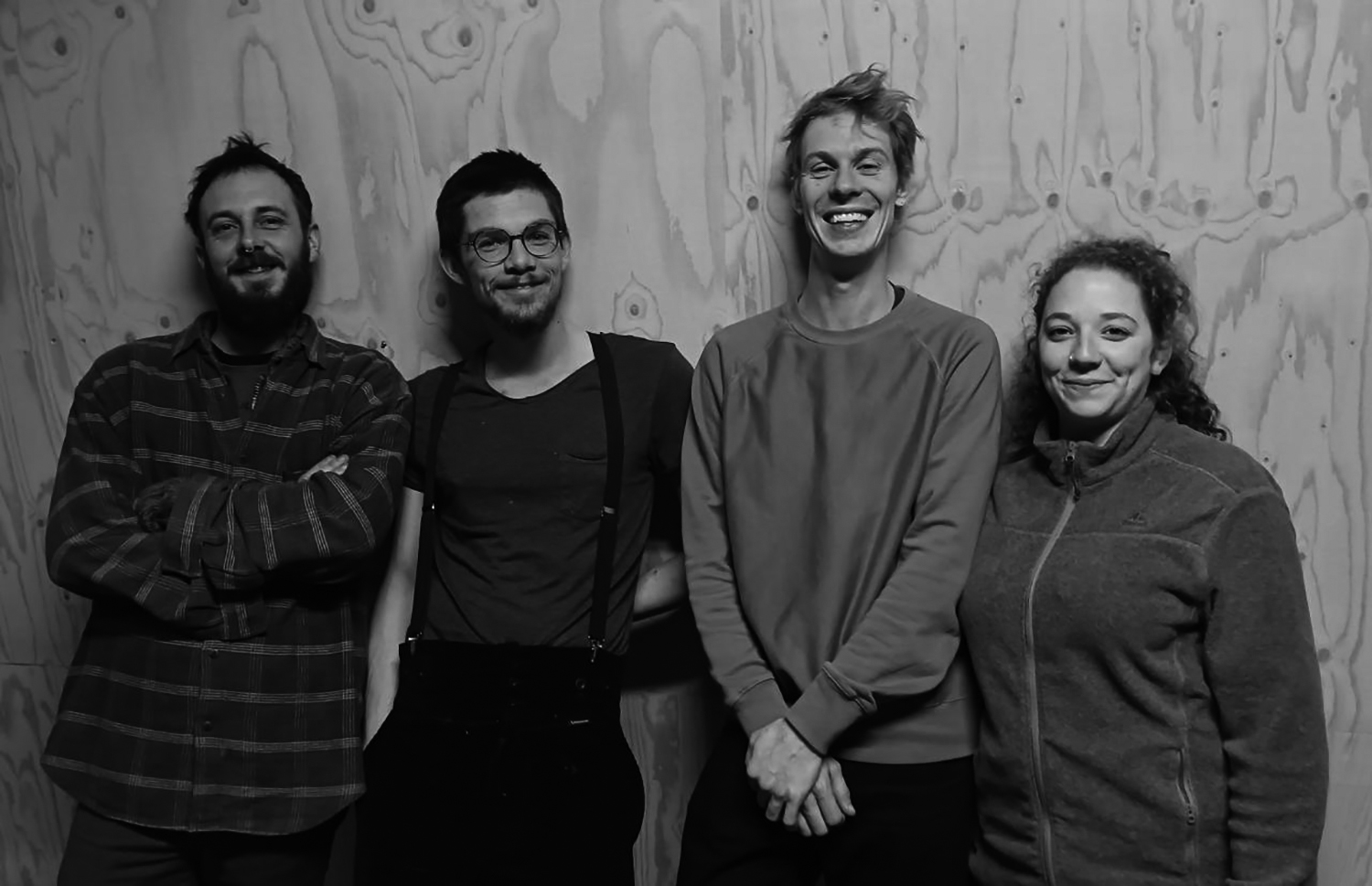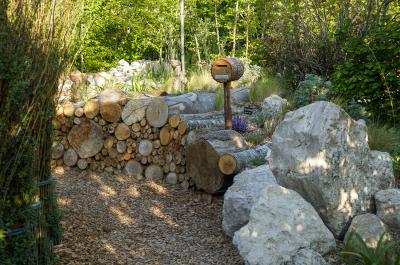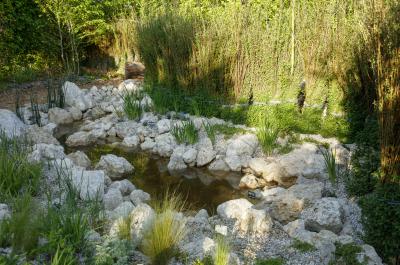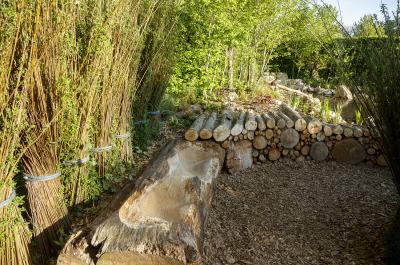15. De derrière les fagots
Awarded on the 21st of June 2023 by a jury of professionals renowned in the world of garden art

Coming right out of the blue, a truly amazing “keystone” species is lending us a hand in this garden. Forest manager, hydraulician, digger and building engineer, beavers are a remarkable species in many respects. They’re a source of inspiration and wonder when it comes to rethinking resilient ways of developing our landscapes. Reintroduced into the Loire basin in 1974, these amphibious mammals have proved their worth as far as ecological habitats go.
Ms Beaver invites us to experience her favourite environment and building work for ourselves: marshes and dams. As they make their way through the garden’s sequences, visitors come to appreciate the positive impact that the animal has on water flows and ecological wealth in wetlands. Two ponds mark out the path. The protective central habitat is composed of a wide variety of pieces of raw roundwood, collected in the surroundings. Sticks, logs and bits of timber are gathered together and meticulously arranged on either side, with the help of blue cable ties in acknowledgement of the animal’s exemplary organisation.
DESIGNErs

A landscape designer with a degree from the Lille National Higher School of Architecture and Landscape, Manuel Jouault focuses on the appropriated and appropriable forms of common areas, in order to ensure that they provide each of their users with a way of connecting with the world. As a member of the collective, he focuses on his commitment to creating landscapes of public interest and his desire for collective construction of tomorrow’s world. Landscaper, designer and illustrator all in one, he makes daily use of his multiple facets and skills.
A landscape designer who graduated from the Lille National Higher School of Architecture and Landscape (ENSAPL) in 2018, Tom Sénécal has also been a self-taught sculptor for over 10 years. He is interested in artworks as objects of symbolism and memory; as a way of transforming our landscapes and territories. The poetics of landscape that he upholds bring finesse and delicacy to all the collective’s projects. His dearest wish is to assist with appropriation and transmission, in his conception of landscape and his art alike.
A graduate of the Lille National Higher School of Architecture and Landscape (ENSAPL), Léane Delicourt proposes to re-examine the role of the “knowing” architect in order to become a “doing” architect, practicing her profession alongside those most directly concerned: users. She wants to give priority to a process of manufacture and participation that legitimises and democratises a form of bricolage accessible to all sectors of the public. As a member of the collective, she is committed to collective construction of cities, landscapes and territories.
A graduate of the Rennes School of Fine Arts, Pierre Brongniart carries out research at Atelier PierrePonce on the relationships we maintain with our environments and the cycle of matter. His works in wood juggle between narrative, childhood and poetry to carry us off into his world. He chose to round off his training by joining the Compagnons du Devoir in order to obtain his Certificate of Professional Competence (CAP) in timber framing. His visual artist’s vision complements the collective’s artistic approach in all its projects.


